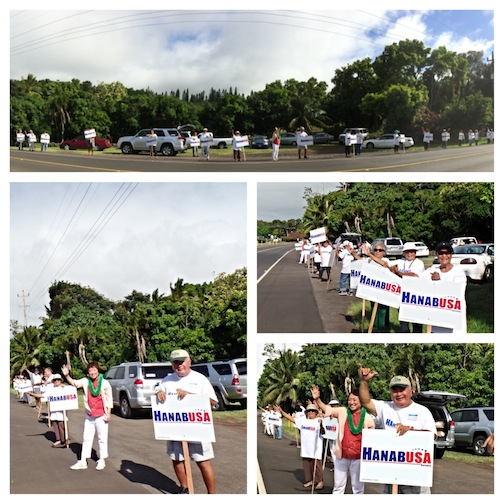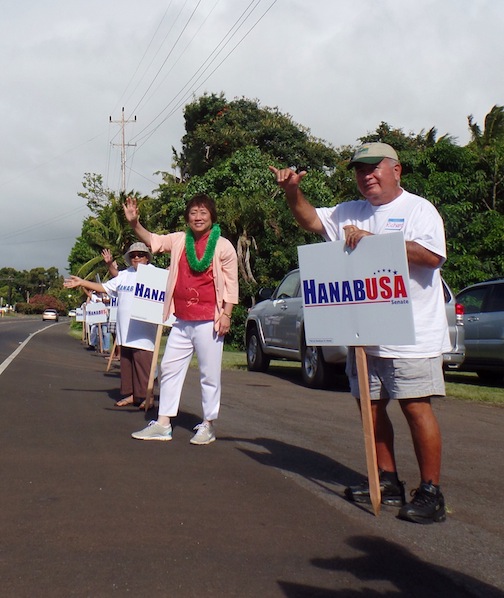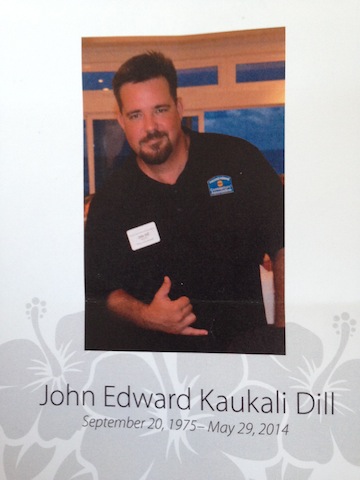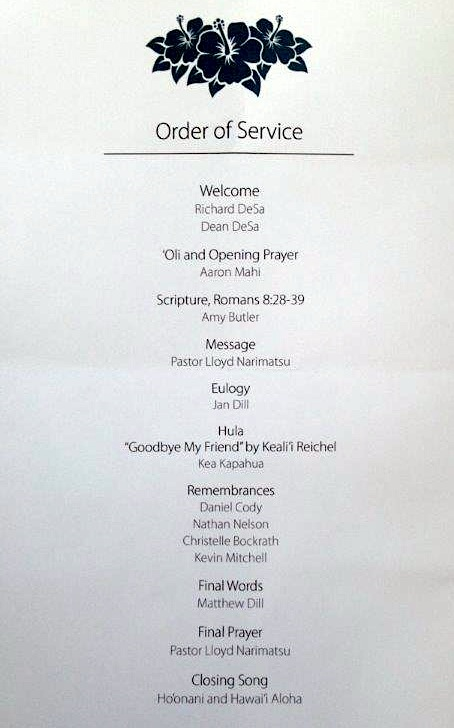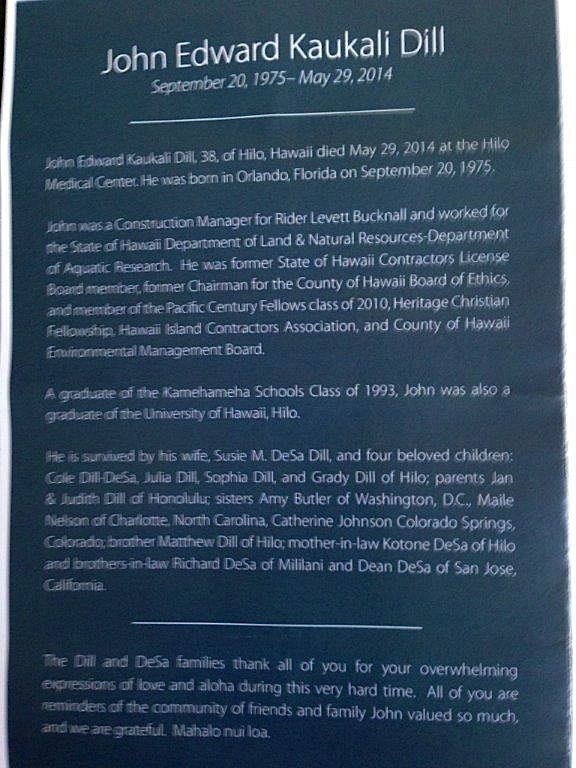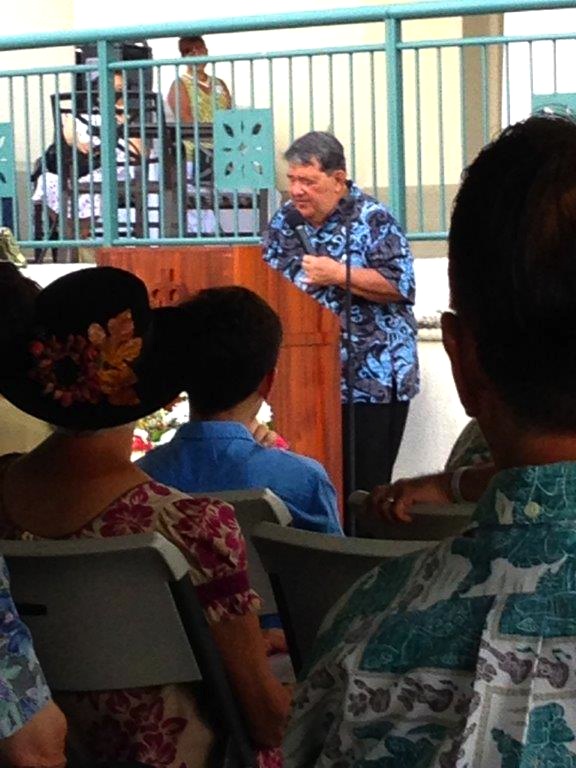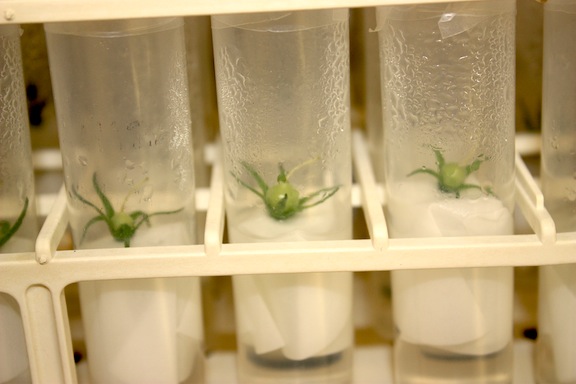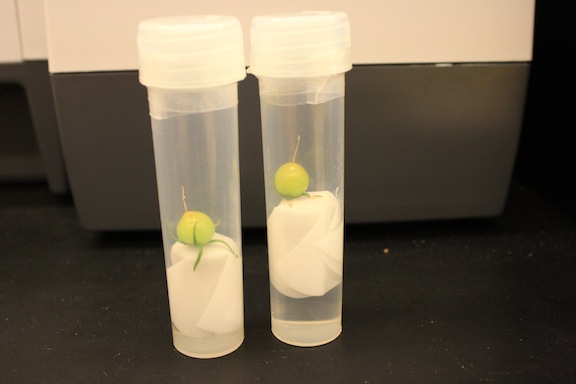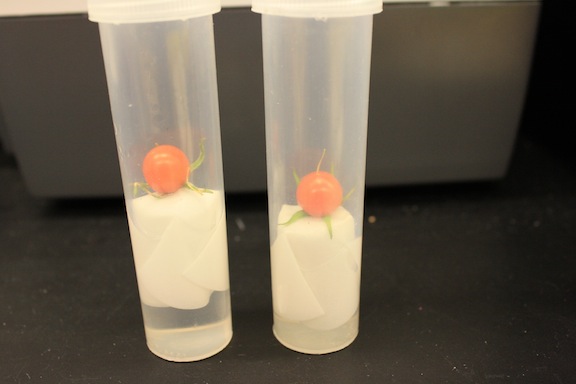Richard Ha writes:
This is a post I wrote back in 2007. I recently reread it and realized it's the same story as what's happening today. It's six years later, and people still don't realize we don't have time to fool around.
I'm going to rerun the post here.
***
October 10, 2007
I spoke at the Hawai‘i Island Food Summit this past weekend, which was attended by Hawaiian cultural people, policy makers, university researchers, farmers, ranchers, and others.
The two-day conference asked the question, “How Can Hawai‘i Feed Itself?”
I felt like a small kid in class with his hand raised: “Call me! Call me!”
I sat on one of the panels, and said that our sustainability philosophy has to do with taking a long-term view of things. We are always moving so we’ll be in the proper position for the environment we anticipate five, 10 and 20 years from now.
I told them I had a nightmare that there would be a big meeting down by the pier one day, where they announce that food supplies were short because the oil supply was short and so we would have to send thousands of people out to discover new land.
I was afraid that they would send all the people with white hair out on the boats to find new land—all the Grandmas and Grandpas and me, but maybe not June.
Grandmas and Grandpas hobbled onto the boats with their canes and their wheelchairs, clutching all their medicines, and everybody gave all of us flower leis, and everyone was saying, “Aloha, Aloha, call us when you find land! Aloha!”
I spoke about where we want to be in five, 10 or 20 years. We know that energy-related costs will be high then. And that we need to provide food for Hawai‘i’s people.
We call our plan “The New Ahupua‘a.”
In old Hawai‘i, the ahupua‘a was a land division that stretched from the uplands to the sea, and it contained the resources necessary to support its human population—from fish and salt to fertile land for farming and, high up, wood for building, as well as much more.
Our “New Ahupua‘a” uses old knowledge along with modern technology to make the best use of our own land system and resources. We will move forward by looking backward.
• We plan to decouple ourselves from fossil fuel costs by developing a hydroelectric plant, which will allow us to grow various crops not normally grown at our location.
• We are moving toward a “village” concept of farming, and starting to include farmers from the area, who grow things we don’t, to farm with us. This way, the people who work on our farm come from the area around our farm. We will help them with food safety, pest control issues and distribution.
• We are developing a farmers market at our property on the highway, where the farmers who work with us can market their products.
• We will utilize as much of our own resources for fertilizer as possible, by developing a system of aquaponics, etc.
This “New Ahupua‘a” is our general framework for the future. It will allow us to produce more food than we can produce by ourselves. It is a safe strategy, in case the worst scenario happens; if it doesn’t, this plan will not hurt us.
It is a simple strategy. And we are committed to it.
My assessment of how we came to be here and where we need to be in the future is this: In the beginning, one hundred percent of the energy for food came from the sun. The mastodons ate leaves, the saber tooth tiger ate the mastodon and we ate the tiger and everything else.
The earth’s population was related to the amount of food we could gather or catch. And sometimes the food caught and ate us. So there were only so many of us roaming around.
Then some of us started to use horses and mules to help us grow food. As well as the sun, now animals provided some of the energy for cultivating food. We were able to grow more food, and so there were more of us.
About 150 years ago, we discovered oil. With oil we could utilize millions of horsepower to grow food—and we didn’t even need horses. Oil was plentiful and cheap; only about $3/barrel. We used oil to manufacture fertilizer, chemicals and for packaging and transportation.
Food became very, very plentiful and we started going to supermarkets to harvest and hunt for our food. Hunting for our food at the supermarkets was very good—the food did not eat us and now there are many, many, many of us.
But now we are approaching another change to the status quo—a situation being called “Peak Oil.” That’s when half of all the oil in existence is used up. Half the oil will still be left, but it will be increasingly hard to tap. At some point, the demand for oil—by billions and billions of people who cannot wait to get in their car and drive to McDonalds—will exceed the ability to pump that oil.
Food was cheap in the past because oil was cheap. Five years ago, oil was $30/barrel but now it’s over $80/barrel. Now that oil is becoming more and more expensive, food is also going to become much more expensive.
In the beginning the sun provided a hundred percent of the energy and it was free. Today oil is becoming very expensive, but sun energy is still free. The wind, the waves, the water—they are all free here in Hawaii. It’s the oil that is expensive.
For Hamakua Springs, the situation is not complicated at all. We need to use an alternate form of energy to help us grow food!
With alternate energy, we should be able to continue growing food—and maybe local food can be grown cheaper than food that is shipped here from far away.
I told the Food Summit attendees that we farmers need to grow plenty of food so that others can do what they do and so we continue to have a vibrant society. If we don’t plan ahead to provide enough food, and as a consequence every family has to return to farming to feed themselves, it would be a much more limited society. People would not be able to pursue the arts, write books, explore space. We would have way fewer choices – maybe only, “What color malo should I wear today?”
There was a feeling going through the Food Summit’s crowd that we were a part of something very important and very special. What I found different about this conference is that people left feeling that this was just the beginning.
We are going to take action.
***


